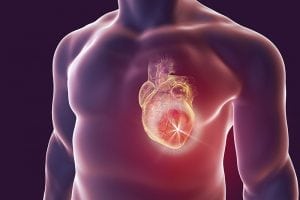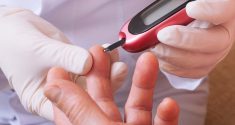Determining the right time of day for atherosclerosis medication may provide greater benefits to patients, according to new research in chronopharmacology.
Why is the Effectiveness of Atherosclerosis Medication Important?
Atherosclerosis is a condition in which fat deposits build up on the walls of the arteries. The deposits are a collection of various substances that gather together to form plaque, which can become attached to the inside of the artery walls. Plaque build-up is typically accumulated from substances such as cholesterol, fatty tissue, cellular waste, calcium and fibrin, a substance that promotes blood clotting.
This condition poses a number of health risks, including the inhibiting of blood flow through the arteries. A larger concern is that the plaque will continue to build up and may eventually cause a complete block against blood flow. Depending on the location of the blockage, the individual may develop a number of health conditions, including:
- coronary heart disease
- angina
- carotid artery disease
- chronic kidney disease
- peripheral artery disease
Additionally, a blocked area near the heart can cause a heart attack, while a blockage close to the brain may induce a stroke. Blockages in the limbs can cause tissue death, also known as gangrene.
Studies indicate that atherosclerosis is something that develops in childhood, though it usually doesn’t pose a threat until later in life. It can begin to cause problems in some people, when they hit their 30s, but most don’t require treatment until they reach their 50s or 60s. This is because the arteries harden as we age and decreased flexibility makes it more difficult for plaque deposits to pass through our system.
The health threats posed by the condition can sometimes be fatal, which is why medication is so important. While your doctor may prescribe the right medication and educate you about proper dosage, when you take your medication may be left up to you. However, recent studies indicate that there is an optimum time of day for atherosclerosis medication. By adjusting your schedule, you may reap more benefits from the treatment and feel even healthier.
Our Inner Clocks Dictate How Our Bodies Function

The discovery of this system has led to a new area of research called chronopharmacology, which looks at how the effects of medication are influenced by our biological clocks. Researchers are finding that a drug’s effectiveness is determined by the time of day at which it’s taken. This is partly due to the fact that the digestive system isn’t always functioning at peak efficiency. For instance, it works hardest in the mornings and late evenings, but slows down in the afternoons.
This correlation between the circadian rhythm and digestion indicates there may be a best time of day for atherosclerosis medication. If patients can adhere to an optimal schedule in taking their medication, they may experience much better results. In the long run, that can mean keeping the condition from growing worse or causing a major health incident.
Circadian Rhythms Indicate the Right Time of Day for Atherosclerosis Medication
Professor Söhnlein of LMU has been leading a team in the study of how the body responds to atherosclerosis at the molecular level. He reports that plaque build-up in the arteries attracts immune cells. As they’re drawn to the site of the build-up, they try to attack the plaque to resolve the condition. Unfortunately, it’s not enough to have an effect and inflammation causes the cells to retreat.
In observing mice affected by atherosclerosis, the team discovered that the circadian rhythm affected how many cells attacked the site of inflammation in the artery walls. At certain times of the day, the number of white blood cells drawn to the site of plaque build-up nearly tripled. The increased population of white blood cells occurred 12 hours after white blood cell microcirculation occurred in small blood vessels. What does this mean for the best time of day for atherosclerosis medication? Doses should be taken at a time when the white blood cells are drawn to the site of the plaque build-up, so the medication won’t affect the cycle of microcirculation in the smaller vessels.
By identifying the pathways that the white blood cells take, the LMU research team found that it is possible to time atherosclerosis medication more accurately. They experimented with the process by blocking white blood cell migration at a time at which the cell count at the site of inflammation was tripled. Since the cells were focused on the inflammation, the pattern of microcirculation in other, smaller blood vessels was not affected.
As research continues, it may be possible to pin down more accurate timetables for white blood cell migration. This can lead to more precise medication schedules that can help resolve medical conditions much more efficiently. Already, learning that there is a right time of day for atherosclerosis treatments is beneficial to patients concerned about blockages and complications from the condition.







